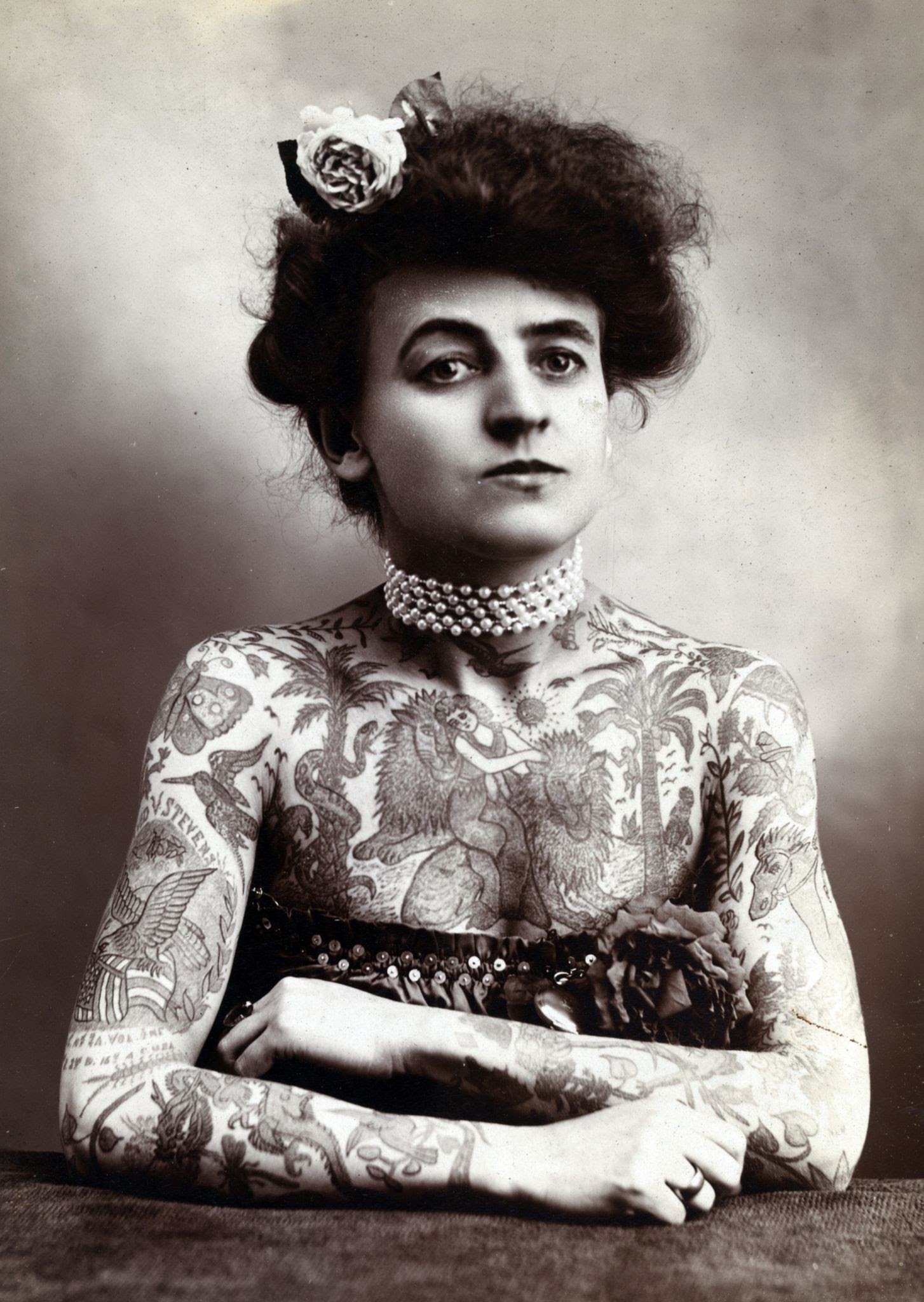Maud Wagner and the women in tattoo history.
by Laura Molina, Alejandra Mourin and chatGPT
What do a contortionist, an aerialist, and a tattoo artist have in common? Maud Wagner!
(I’m probably laughing by myself.)
But who was Maud Wagner? Well, she was the first documented Western female tattoo artist.
Maud Stevens Wagner entered the tattoo world around 1904 when she met and married tattoo artist Gus Wagner. Before this, she worked as a contortionist and aerialist in a circus. Gus asked her on a date, and she agreed, on the condition that he teach her how to tattoo. As a lady would do!
Maud became the first female tattoo artist in U.S. history, and not only that—she also became heavily tattooed herself. Soon, she and Gus began traveling to different cities, spreading the art of tattooing.
One curious fact about this successful couple is that they chose to continue the tradition of hand-poked tattoos. The electric tattoo machine had already been invented and patented in 1891—12 years before Maud entered the tattoo world—and Gus even tattooed her with one of these machines. Yet, they both decided to stick with hand-poked techniques. They even taught their daughter, Lotteva Wagner, to tattoo by hand, and she carried on the tradition long after her parents passed away.
Tattooing Tools c. 1900-1940 Part of the South Street Seaport Museum collection.
Women in Tattoo History
Maud Wagner wasn’t the only woman who left a mark on tattoo history. Nora Hildebrandt is often credited as the first tattooed woman in the U.S. However, she wasn’t necessarily the first woman to have tattoos, she was the first to purposefully tattoo herself for the sake of performing in circuses and dime museums.
Nora’s novelty didn’t last long. Just two weeks later, Irene Woodward became the second tattooed woman to enter the show business. She became so popular at one point that by the time she died, it said there were 38 wax figures of her in European museums. Over time, more and more women became part of the so-called "freak shows," including Madame Odelia, Trixie Richardson, Miss Lulu, Jean Furella, and many more.
Women played a crucial role in the spread and popularization of tattoo culture in the U.S. A big part of the normalization we see today is thanks to circuses and dime museums, where tattooed performers captivated audiences. The most popular of these shows? Tattooed women. I wonder why.
Margot Mifflin wrote in her highly recommended book, Bodies of Subversion:
"Woodward and Hildebrandt led a brigade of women who, over the next two decades, would both integrate the tattoo tent and edge men out of the limelight with their more titillating enticements: forced to bare a scandalous amount of flesh in order to show their work, women provided a sensational double whammy onstage—a peep show within a freak show."
Nora Hildebrandt, first tattooed lady.
Irene Woodward, used to call herself the original tattoed lady.
Another interesting fact: Tattooed women also helped promote the use of bloomers. At a time when the garment was considered controversial, these performers made it more visible and acceptable in public entertainment.
The role of women in the spread and popularization of tattoos during this time is impossible to quantify. By using sideshows as a primary instrument for promoting the culture, women gradually transformed tattooing from a taboo into an art form. If Nora and Irene opened the door for tattooed women in circuses, Maud Wagner opened it for women to become tattoo artists in the industry.






